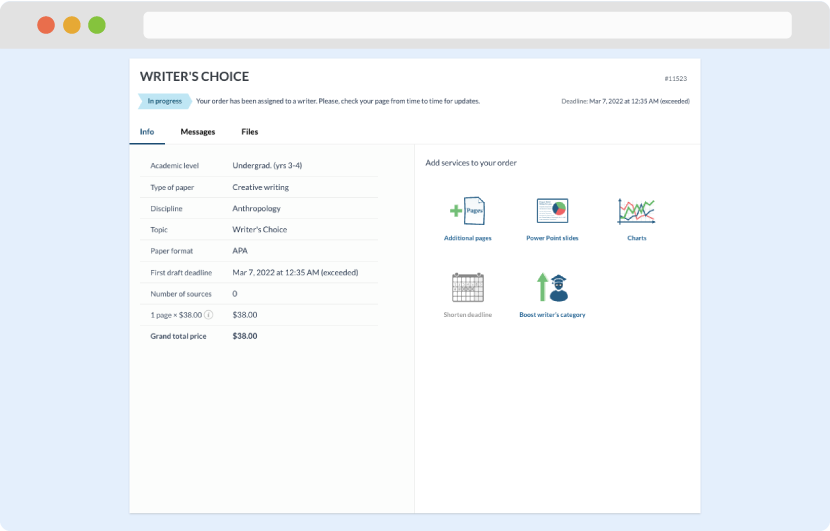During the live session, you practiced a Real Justice circle for the following scenario:
Scenario:
At PE, everyone is playing touch football and agreed to the rules of the game. Kim tackles Taylor to the ground and shoves her hard as she is getting up. Taylor jumps up and pushes back. Other students and the coach rush to separate them.
Updating the Script:
Using the names in the scenario above,
update your script
. Before writing your script, state your goals in facilitating this conversation.
Rehearse:
Using your updated script, record yourself stating your goals then rehearsing facilitating this conversation. Since there won’t be other participants to talk back, pause at the point in which they’d be responding.
When you finish recording, upload your video to YouTube and link your video below.
Teach! Institute
Introduction to Restorative Practices
Objective: Champion Teachers will be able to…
● learn and practice techniques for regulation in and out of the classroom.
● plan and execute restorative conversations.
We assume positive intent…
How can using positive intent help us support our students when a conflict arises?
Understanding your Dysregulation
What are the child or adult behaviors that elicit your emotional response?
Understanding Dysregulation:
Overgeneralization: Involves taking one situation and making it a general rule about other situations without
testing the accuracy of that rule for different circumstances. Words such as never, always, all, everyone, and
nobody may indicate an overgeneralization. An example might be “This child never pays attention.”
Global Labeling: The habit of applying stereotyped labels to whole classes of people, things, behaviors,
experiences. Example: “Principals are so controlling.”
Focusing on the Negative: Selective hearing or seeing that only notices what is negative. Example: “I’m a bad
teacher; these students don’t do anything right.”
Catastrophizing: A type of focusing on the negative that we think will happen in the future. Example: “My
students will never be on grade level. I’m going to lose my job.”
Polarized Thinking: Puts everything in terms of extremes, also called “black-and-white thinking.” Example: “All
of my students are struggling academically.”
Self-Blame: Puts you at the center of the universe and then blames you for everything that goes wrong there.
Example: “I am sorry that my students didn’t do better on that assessment. I don’t seem to be teaching them
well.”
Personalization: Also puts you in the center of the universe, but makes you feel like you’re always under
critical observation. Example: “I’m the only teacher who can’t understand this data analysis process.”
Mind Reading: The habit of assuming that everyone thinks the way you do—projecting your feelings onto
them and then proceeding as if your projections were facts. Example: “They will all know I’m a horrible
teacher.”
Introduction to Restorative Practices
1
Teach! Institute
Control Fallacies: Either we think we are in control of everything or we think we are in control of nothing.
Example: “Nothing I do can make a difference.”
Emotional Reasoning: Relies on feelings to interpret reality. You don’t use your intellect to examine the
accuracy of your emotions. You don’t recognize and challenge the judgmental self-talk that may be driving
emotions.
Reflect:
Of these cognitive distortions, which of these do you self-identify most with? What examples do you recall when you
thought this way?
Self-Talk
What words or phrases do you want to remember to help you regulate yourself when you are triggered?
Introduction to Restorative Practices
2
Teach! Institute
Deep Acting
1. Situation
When is a time that you have become
dysregulated-frustrated-angry-etc with a student or in a
work environment?
2. Emotions
What are the emotions you feel during this situation?
Rate the intensity of the emotions from 1 (not at all) to
10 (extreme).
3. Automatic Thoughts
What are the things you are thinking in this instance?
Rate your degree of belief of these things from 1-10.
4. Evaluate
How reasonable are these beliefs? How do you feel now
that you’ve reflected on them?
5. Modify Thoughts
Did you notice any distortions? How can you change
your thinking so that you can remain calm in this
situation?
6. Positive Self-Talk Reminder
Questions to help you identify your thoughts:
● What is going through my mind as I am feeling this emotion?
● What am I telling myself about this situation?
● What am I afraid might happen?
● Am I holding expectations for myself or others?
● Am I speculating about what another person may think?
● Am I making any predictions for future events?
● Am I evaluating myself, other people, or the situation?
Questions to help you evaluate the accuracy and usefulness of a thought:
● What is the evidence that supports or contradicts this thought?
● Is there an alternative explanation? Is there another way of looking at it?
● Am I overestimating the probability of the negative event occurring?
● What is the worst that could happen?
● What is most realistic?
● If a friend had this thought, what would I tell them?
● To the degree that this belief is true, what should I do?
● How does it work in the long run, if I let this belief be in charge of my life?
● What might be a more useful or helpful way of thinking about this?
Reflect:
What resonated with you during the Deep Acting exercise and the first half of the session?
Introduction to Restorative Practices
3
Teach! Institute
Scenario:
Mrs. Giberson’s class has 7 laptops in their classroom. During ELA, students take turns using the computers to
work on their research. However, the same students are taking the computers every day and not allowing
others to have the opportunity to use them. A few students grabbed the computers from each other, and one
fell to the ground breaking the screen. What should these students have done?
Reflect:
What was this experience like for you as a participant?
What does that tell you about what students might need in order to feel safe to participate?
Using what you know about a trauma lens and what’s needed for a learning brain, why are circles an important
component to fostering that classroom environment?
**Potential Situations for Restorative Circles can be found on page 9.
Introduction to Restorative Practices
4
Teach! Institute
Real Justice Script
Terms:
Actor: The person who caused the issue.
Acted Upon: The person who was impacted by the actor’s actions.
Support People: Family or Friend
Note: These terms have been modified from the original terms of perpetrator and victim to minimize
the connection to criminality.
Restorative Practice
Facilitator Guide
Step 1 Welcome & Introduction:
“Hello, as you know my name is _____. I have been asked to facilitate this
meeting (Introduce participants if this is necessary). I have spoken to you all
about the incident (briefly describe what happened).
_____ (actor) has admitted his/her part. I will now invite you all to talk about
how you and other people may have been hurt or affected by what happened.
This will help us to understand what is needed to make things right.
Step 2 Start with the actor(s):
“I would like to start with _____.
Could you tell us what happened and what was your part?
What happened then?
At that time, what were you thinking about?
What have you thought about since?
In what ways has ____ (acted upon’s name) and others been hurt or affected by
what you did?
Step 3 In turn, invite the (i) acted upon/s (ii) their family or support people (iii) the
actor’s family or support people to speak:
____ (acted upon’s name) what did you think when you realized what _____
(actor) had done?
How has this incident affected you?
What has been the hardest thing for you?
Step 4 Go back to actor(s):
“You have just heard how ____ (acted upon’s name) and others have been
affected by what you did. Is there anything you want to say at this moment?
Step 5 Return to acted upon(s):
“_______ (acted upon’s name), what do you think needs to happen to make
things right?
Introduction to Restorative Practices
5
Teach! Institute
Step 6 Return to actor(s):
“________ (actor’s name), what do you think of what _____ (acted upon’s name)
suggested/ What do you think you need to do?
Step 7 Return to the acted upon(s):
“is there anything else you think will help make things right?”
Step 8 Return to actor(s):
“What have you learned from our meeting?”
Step 9 Final invitation to speak:
“Before I close the meeting, does anyone have anything further they need to say
or to share?”
Step 10 Close the meeting:
“Thank you for participating in this meeting. I hope our time together has helped
make things right again.”
Reflect:
What are the participants saying and doing to be able to come to a resolution and restore their relationship?
Introduction to Restorative Practices
6
Teach! Institute
Take it live: Real Justice Script
Terms:
Actor: The person who caused the issue.
Acted Upon: The person who was impacted by the actor’s actions.
Support People: Family or Friend
Note: These terms have been modified from the original terms of perpetrator and victim to minimize
the connection to criminality.
Restorative Practice
Facilitator Guide
Step 1 Welcome & Introduction:
“Hello, as you know my name is _____. I have been asked to facilitate this
meeting (Introduce participants if this is necessary). I have spoken to you all
about the incident in which ____ tackled ____ and pushed him as he got up and
then ____ pushed _____ back.
_____ (actor) has admitted his/her part. I will now invite you all to talk about
how you and other people may have been hurt or affected by what happened.
This will help us to understand what is needed to make things right.
Step 2 Start with the actor(s):
“I would like to start with _____.
Could you tell us what happened and what was your part?
What happened then?
At that time, what were you thinking about?
What have you thought about since?
In what ways has ____ (acted upon’s name) and others been hurt or affected by
what you did?
Step 3 In turn, invite the (i) acted upon/s (ii) their family or support people (iii) the
actor’s family or support people to speak:
____ (acted upon’s name) what did you think when you realized what _____
(actor) had done?
How has this incident affected you?
What has been the hardest thing for you?
Step 4 Go back to actor(s):
“You have just heard how ____ (acted upon’s name) and others have been
affected by what you did. Is there anything you want to say at this moment?
Step 5 Return to acted upon(s):
“_______ (acted upon’s name), what do you think needs to happen to make
things right?
Introduction to Restorative Practices
7
Teach! Institute
Step 6 Return to actor(s):
“________ (actor’s name), what do you think of what _____ (acted upon’s name)
suggested/ What do you think you need to do?
Step 7 Return to the acted upon(s):
“Is there anything else you think will help make things right?”
Step 8 Return to actor(s):
“What have you learned from our meeting?”
Step 9 Final invitation to speak:
“Before I close the meeting, does anyone have anything further they need to say
or to share?”
Step 10 Close the meeting:
“Thank you for participating in this meeting. I hope our time together has helped
make things right again.”
Reflect: What was this experience like for you as a participant?
What does that tell you about what students might need in order to feel safe to participate?
Using what you know about a trauma lens and what’s needed for a learning brain, why are circles an important
component to fostering that classroom environment?
Introduction to Restorative Practices
8
Teach! Institute
Potential Situations for Restorative Circles
Discussion 2 Discussion 3
students that leave others out
arguments at playground
(physical)
hitting each other (fighting)
fight// arguments
bullying
sharing (lack of)
skipping lines
speaking respectful to peers
inappropriate language and
unkind words
tattling // problem solve
laughing (inappropriate times)
dancing (during instruction)
dealing with a death
name calling( lost, not picked
reactive)
owning up to wrong (lying)
drama
clicks (specific group of friends)
Speaking out of anger
ganging up on other girls
playing inappropriately
making fun of others
Panicked
frustrated
anxious
nonchalant
upset
upset anxious
afraid of the consequence
confused and upset
panicked scared
upset/ not fair
embarrassed // scared
nervous// relieved
disappointed//embarrassed
feel good about fighting for right
nonchalant
shocked// upset
confused shocked
relieved
upset
upset
disappointed
Computers go on a rotation
hold on to computer tighter
schedule for computers
sign in sign out
help desk ticket
assigned times
rotation/ schedule
apology!!
rotation//apology!!
apology!!// help desk ticket
rotation// group work for
computers with posting
schedule
sign in and sing out
schedule// rotation
schedule// sign in sign out
get more computers// find a way
to get more computers (class
project)
apology!!// ideas to help IT person
chart of times and names
record of who uses computer//
after school activity
scheduling//buddy share
discussion on how to share//
transitions of computers
discussion about taking care of
expensive equipment// buddy
work
jobs 1 person pass out computer
checking out computers//timers
group leaders
group//student leaders (jobs)
rotation
Introduction to Restorative Practices
9
Essay Writing Service Features
Our Experience
No matter how complex your assignment is, we can find the right professional for your specific task. Achiever Papers is an essay writing company that hires only the smartest minds to help you with your projects. Our expertise allows us to provide students with high-quality academic writing, editing & proofreading services.
Free Features
Free revision policy
$10Free bibliography & reference
$8Free title page
$8Free formatting
$8How Our Dissertation Writing Service Works

First, you will need to complete an order form. It's not difficult but, if anything is unclear, you may always chat with us so that we can guide you through it. On the order form, you will need to include some basic information concerning your order: subject, topic, number of pages, etc. We also encourage our clients to upload any relevant information or sources that will help.
Complete the order form
Once we have all the information and instructions that we need, we select the most suitable writer for your assignment. While everything seems to be clear, the writer, who has complete knowledge of the subject, may need clarification from you. It is at that point that you would receive a call or email from us.
Writer’s assignment
As soon as the writer has finished, it will be delivered both to the website and to your email address so that you will not miss it. If your deadline is close at hand, we will place a call to you to make sure that you receive the paper on time.
Completing the order and download